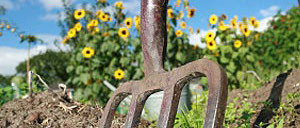 A proposal by Kaat Vander Straeten
A proposal by Kaat Vander Straeten
In our town home gardeners, Community Garden-ers, landscapers and small farmers import fertility from far away, packaged in plastic bags, at great expense. This while households discard nutrient-rich food scraps, owners of horse barns pay out-of-town services to cart away manure, and landscapers and tree professionals down-cycle carbon-rich wood into mulches, which also get exported out of town. These wasteful and unsustainable practices moreover contribute to global warming.
A Soil Fertility and Carbon Sequestration Community Program would collect and “cook” household scraps, horse manure and landscapers’ leaves into compost and supercharge it with biochar made from the woody materials. Thus several “waste products” are turned into feedstock for an environmentally sustainable end-product. Moreover, carbon sequestered in biochar no longer contributes to global warming. The loop thus created is entirely local and closed: nutrients, dollars and carbon remain in the community. The only import is knowledge, for such a Program will engage the community, opening opportunities for residents and school kids to learn, and care, about soil life and atmosphere.
I seek interested people who will help me develop a Town Committee or any other form of a not-for-profit organization (could be a co-op too) that will build such a local, resilient, circular fertility economy. We will research the potential engagement of feedstock suppliers and compost distributors and buyers; the appropriate size of such an operation, including the cost of employees and machinery to collect, mix and distribute the product; possible siting, and collaboration with local government; and research educational and community outreach.
Also let me know if you would be interested in the product, or if you are someone who would have feedstocks (horse manure, food scraps you are not composting, etc.)

Hi,
I am very interested in getting involved with this project. How would I go about doing so?
Thank you!